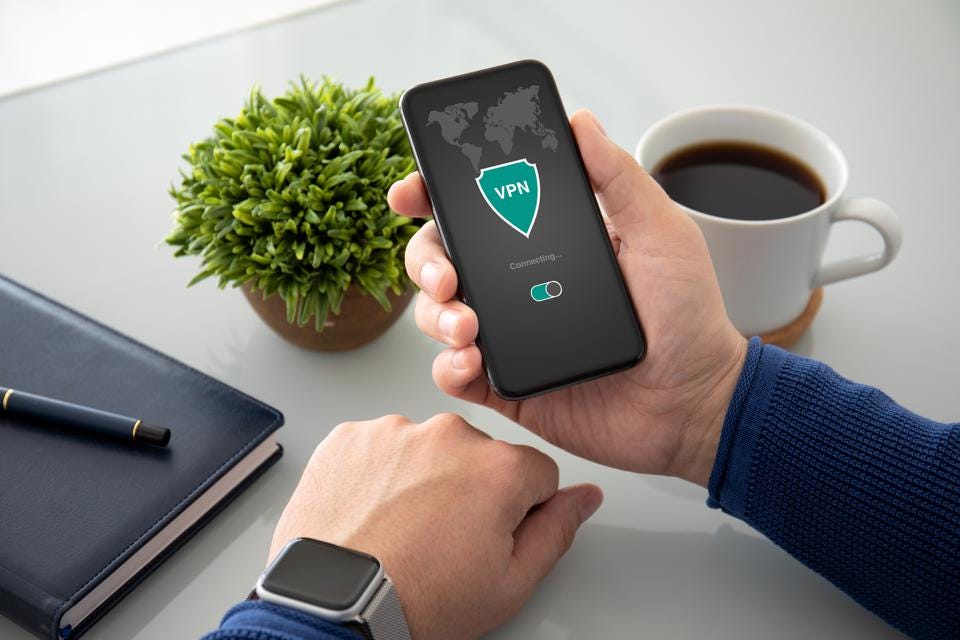
So, you own a symbol of the digital age: an Apple computer. Do you take pride and delight in using it, or couldn’t care less about the bitten fruit logo? Anyhow, it’s still a computer susceptible to the online dangers. You must have heard of Virtual Private Network (VPN), too, likely because someone you know used it to watch regionally locked content. VPNs do allow it, but that’s not what they were invented for. So do you need a VPN on a Mac? Likely, yes!
Apple strives to create high-quality, user-friendly and esthetic products. For many years now, the company’s policy was often to get any unnecessary burden off the end user. Engineers have been working to create systems that were doing as much work as possible automatically. The result? Less hassle for the ordinary users who wish their Macs just to work smoothly. But this doesn’t mean you have no control! You’re free to highly personalize it and configure a lot of features. One of the most important is the way you connect to the Web. Here’s where a VPN can get useful.
Table of Contents
VPN to increase your online security on a Mac

Source: forbes.com
If you don’t wish to get scared, don’t read too much online security news. The reports and warnings from around the world can sound really intimidating. But the truth is, online threats are both real and not necessarily extremely dangerous for you. Gigabytes of personal data leaked or financial frauds amounting to millions of dollars don’t happen on an everyday basis! Especially if you take some extra preventive steps.
A VPN (Virtual Private Network) is exactly that. It’s best known as a way to bypass geo-blocking. This feature allows viewing content that’s normally unavailable. But that’s actually a side effect. The real strength of VPN is the virtual tunnel – a special element of network architecture. It spans from your device to the VPN provider’s server and covers all of your online connections. It creates a cryptographic shield impenetrable for outside observers (or intruders) like your ISP, government or hackers.
To extend the protection to your entire network, you can consider using a vpn enabled router, which secures all devices connected to your home network with the same level of privacy and security. There are different types of routers available, including standard home routers, mesh routers for broader coverage, and gaming routers designed for low latency and high-speed connections.
A vpn enabled router secures all devices connected to your home network with the same level of privacy and security. This ensures that your online activities remain confidential and protected, whether you’re browsing the web, streaming content, conducting sensitive transactions, working remotely, or simply ensuring your digital privacy and security. It’s an invaluable tool for safeguarding your digital presence and information. Furthermore, using a VPN-enabled router can also help you bypass regional restrictions and enjoy a more open and unrestricted internet experience while keeping your online identity anonymous and secure.
What’s the use of a VPN on Mac?

Source: usplash.com
Such protection proves useful regardless of what your device and operating system is – Mac, Windows, Android, iOS, Linux. That’s because networking protocols are universal across all of them, and so are the potential threats. However, every hardware, operating system and program has specific countermeasures – and weaknesses, too.
The vital feature of a VPN is that it gives an additional layer of protection. It’s independent of any anti-virus, firewall or encryption software mechanisms. Conclusion? It doesn’t matter if your cybersecurity is flawed, and how much. The VPN for Mac is just there, helping and working as a precaution, like an alarm at your home. It might save you in case of a security breach. How exactly can you get started?
VPN on a Mac – basic how-to

Source: unsplash.com
Basically, you have two ways. Many modern systems, including macOS, can support VPN natively. This requires putting in the configuration, which is at least server address and login credentials. This is the way if you have them from the VPN administrator. The macOS user guide can help with details. This method is often used by companies or schools to connect remotely to their internal network. That’s what VPN was invented for!
The other way is simpler for the user and requires more from the provider: a dedicated app. This is the case with most commercial VPN services for Macs. You just need to download a program which takes care of the configuration, either from the App Store or from the producer’s website. Such VPN systems are dedicated for security and geo-block bypassing. Adjusting settings manually might be tricky for the regular user. For example, it would include searching for the nearest server and its periodic changing. But apps are highly automated with a simple and user-friendly interface.
Now you know why you would need a VPN: for cybersecurity. A VPN service boosts your online protection and privacy. Install one on your Mac and browse safe!







